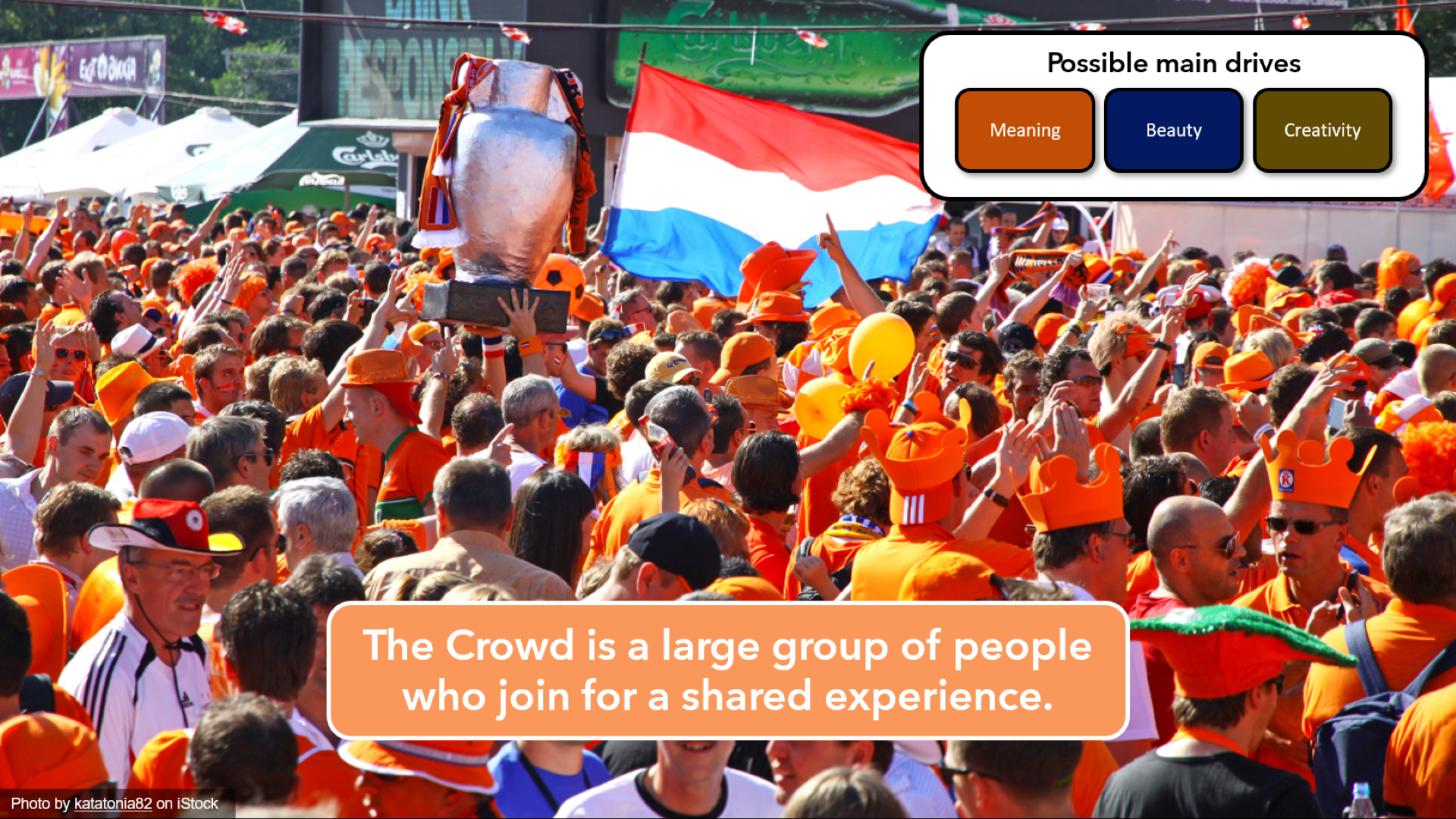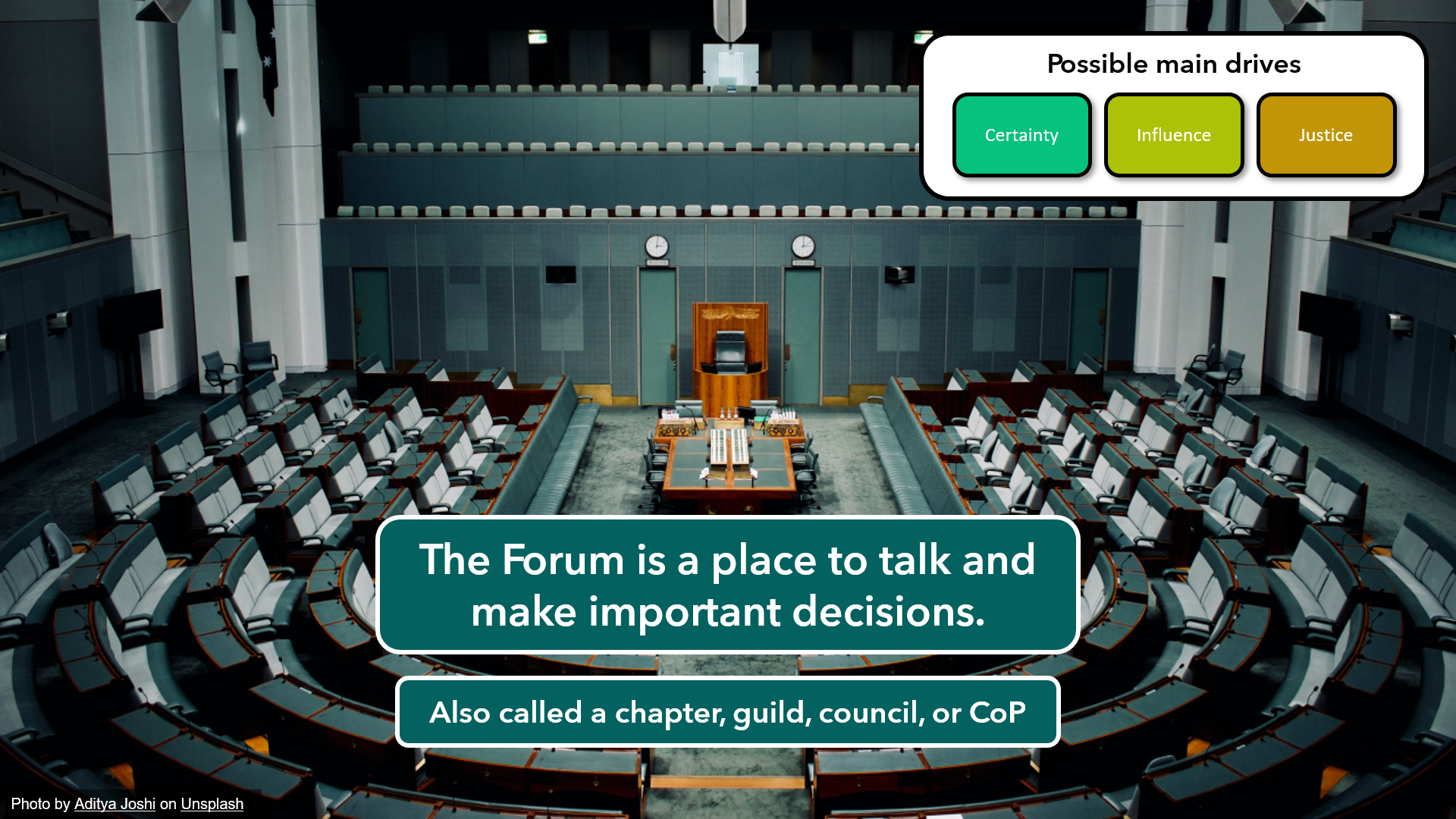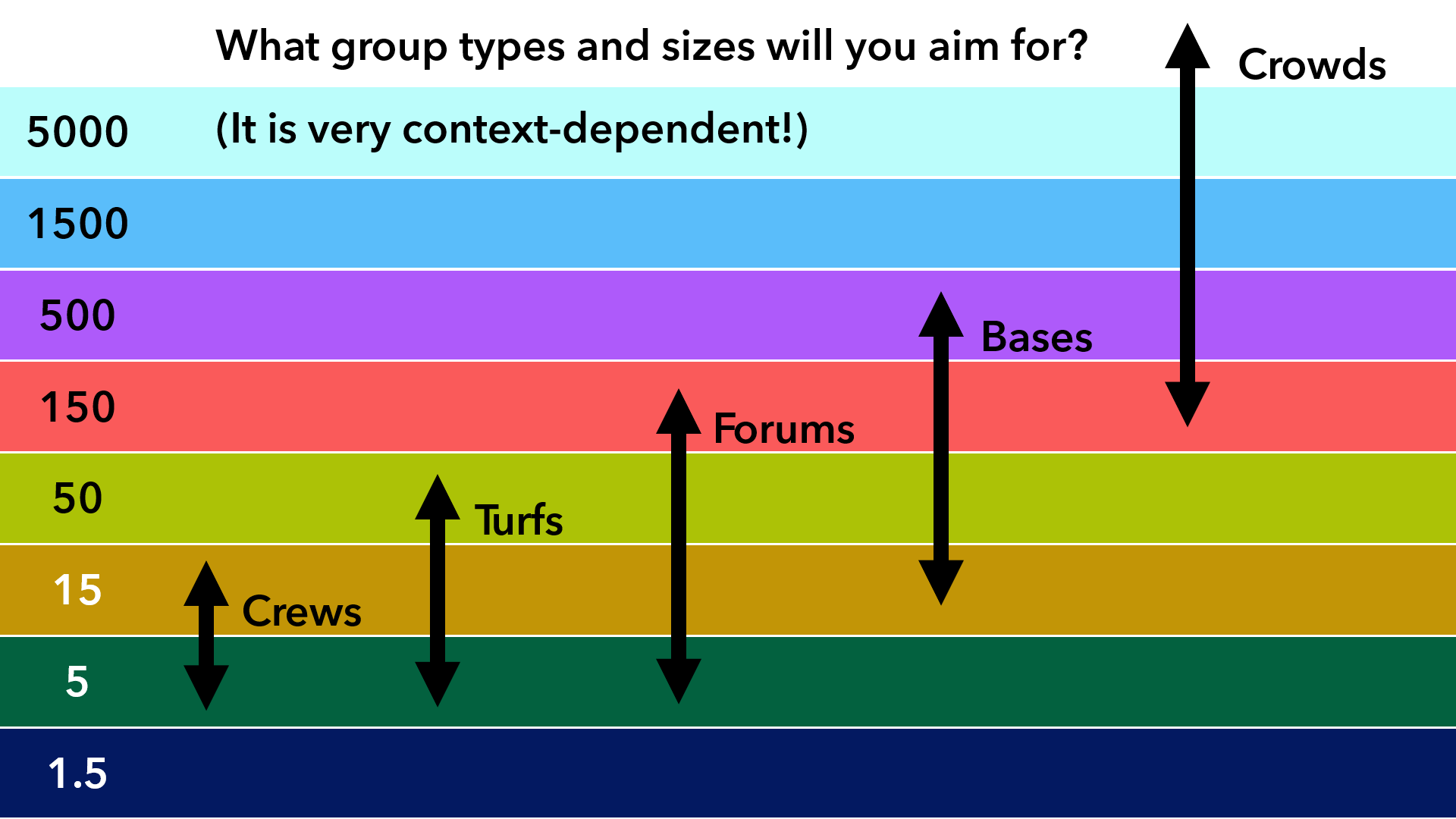What Group Types and Sizes Work for You?
Author: Jurgen Appelo
In what kinds of groups should we organize ourselves?
You can put 50,000 people in a stadium and have them watch a game together, but when you want them to play some games, you first need to form teams. It was always like that when I grew up as a kid, no matter if I was at school, at the sports club, or just playing outside with friends. As soon as we agreed on a game, the first questions to come up were, "What teams do we need?" and "Who is on which team?" I was usually on the team that lost.
At work, it's not much different.
"How do we form teams?" "Who should be on which teams?" "Do we need different kinds of teams?" "Should the teams overlap?" "Can people switch between teams?" and "How big or small should we make these teams?"
Dunbar's Numbers
Recently, I have been inspired by the book Friends: Understanding the Power of our Most Important Relationships by anthropologist and evolutionary psychologist Robin Dunbar. (Yes, he is the one who popularized the number 150, also referred to as Dunbar's Number, which is often—no surprise there—misinterpreted as an upper limit.) Robin Dunbar discovered that, across many kinds of human social networks, certain group sizes are more stable than others.
Across many research topics, the numbers differ a bit, but they all seem to cluster together in a somewhat surprising way.
Researchers found average group sizes in hunter-gatherer societies of 42, 127, 567, and 1728.
Group sizes of 4, 11, 38, 148 emerged when studying Stone Age rituals based on stone circles.
From 1 trillion phone calls, Chinese researchers found mean values of 2, 7, 20, 54, and 141 frequent contacts.
They found similar stable group sizes in Christmas cards data, Facebook datasets, student networks, etc. The most stable numbers roughly correspond with 1.5, 5, 15, 50, 150, 500, 1500, and 5000. As Dunbar says, this reveals the fractal nature of social networks.
Note: Some of you might rightfully point out that social networks in the Stone Age were quite different from now. Back then, your family members were also your neighbors, your colleagues, and your friends. The clan or tribe lived together, and there was a significant overlap of social circles. But nowadays, we have entirely different circles that hardly overlap. My family members are not my neighbors; my neighbors are not my colleagues, and my colleagues are not my best friends. However, this doesn't seem to matter for the fractal aspect of social networks. The same stable numbers (5, 15, 150, 500 ...) show up no matter whether researchers study stone circles, campsites, mobile data, or social media.
For those of us who organize companies into teams, business units, divisions, and communities of practice, it is good to be aware that some sizes are more stable than others. There is no need to set hard limits on group sizes, but it's good to know that a team of five people could (statistically) be more stable than a team of eight. And business units are more likely to have (roughly) 150 people rather than 250.
Time Investments
The next question for organization designers might be, "What kinds of groups do we need?" If you read Robin Dunbar's book, you see that the answer to this depends on people's benefits from participating in groups. In other words, "What's in it for them?"
Last weekend, I baked an apple pie. It cost me the entire Saturday morning to make it, and I shared the pie with my best friends, who stayed with us for the weekend. I also brought some pieces to our closest family members. Sadly, by the time it was Sunday night, there was nothing left for our neighbors downstairs. Sorry! Maybe next time. We all have relationships, and those relationships come with priorities.
People spend a lot of their time on the strong ties of their social networks. They invest only a small amount of their time on weak ties. We all need to balance the benefits of our many relationships against our time investments. So, it's worth asking ourselves, what are the benefits? Is it worth baking another apple pie for the neighbors?
Drives and Benefits
I believe it's helpful to understand which types of groups are beneficial for a company and which personal benefits the group members get out of their time investments. Why would a worker be part of a team? Why participate in a community of practice? Why should they feel part of a business unit or a division? If there are no good reasons for workers to participate in groups, the groups will never be stable. The stability of strong and weak ties depends on the benefits.
Let's look at the 25 Drives Grid and see which human drives might be triggered by some of the patterns of the unFIX model.
The 25 Drives Grid
Crews
The Crew is a small team on a mission with a defined goal. The benefits for organizations to work with teams are evident. Mountains of books have been published on this topic. But what are the benefits for employees to invest a significant portion of their days on teamwork? I guess that a Crew gives people an opportunity to enjoy Friendships. And teams can make people feel more Competent because a group of five can achieve more than what five individuals can achieve by themselves. Teamwork might also satisfy people's need for Curiosity because most new product design and development in an organization happens on teams. In short, teamwork can be highly motivating.
Turfs
The Turf is an area cultivated and protected by the same people. It could be a codebase, a product area, a machine, or a town district that one group of people collectively takes care of. Clearly, a feeling of Ownership comes with the stewardship of such a territory. The human drive for Security might also play a role in the back of some people's minds as the Turf needs protection from harm, and the group could be working hard to keep their territory free of risks and dangers. On top of that, I suspect a sense of Loyalty will easily emerge when a group shares responsibility for the same codebase, product area, machine, or town district.
Bases
The Base is the business unit where people feel safe and at home. I have often said that a feeling of Belonging is missing in most agile scaling frameworks. And though there is a lot of talk about psychological Safety in agile communities, only a few models identify the element that is explicitly tasked to safeguard this basic human need. On top of that, every human being needs to feel appreciated, and they'd like to see some Recognition for their contributions. Usually, workers don't leave companies because of a lack of pay; they quit their jobs because of a lack of belonging and appreciation. The Base should deal with that.
Crowds
The Crowd is a large group of people who join for a shared experience. In many cases, this could be the entire company. In other cases, it can be the major divisions of an enterprise. Regardless, it is the large group of people that workers feel they identify with and the group they have chosen to join because of what it could offer to their careers, personal development, and fulfillment. I imagine that Meaning plays a vital role at this level, but the intrinsic Beauty of a profession or the Creativity of the work to be done could also be among the drives that trigger people to become employees in a Crowd. Either way, the group is extensive, and human beings have various good reasons to join a large group.
Forums
The Forum is a place to talk and make critical decisions. Across different teams, business units, and divisions, there can be an urge to get together with some people to discuss the way people are expected to work and collaborate. Opinions must be exchanged, and decisions must be made, or else there might be anarchy. The benefits for the organization are apparent. But what about the workers? My guess is that the fundamental human drives of Certainty, Influence, and Justice could be triggered with a Forum. A bit more clarity on how we are supposed to work together, an opportunity to exert power in the organization, and a chance to see conflicts resolved peacefully. Those things are worth joining a debate now and then.
Context-Dependence
The five patterns I listed above are not a fully exclusive set. But they are a good starting point for most organization designs. And the human drives I mentioned for each are just meant as food for thought. Your mileage will differ. Human motivation is highly context-dependent, so please do your own thought exercise. What common group types does your organization need? Why would people care about joining? What's in it for them?
When you know which group types your organization needs (and what would motivate people to join them), you should take a moment to reflect on the stable group sizes that are most likely to emerge. The picture below gives you an idea of what you can expect.
"How do we form teams?"
"Do we need different kinds of teams?"
"How big or small should we make these teams?"
It is good to have these discussions when you start or grow a business. And I don't have all the answers for you because so much depends on your context. But in general, it doesn't hurt to:
Define common group types (depending on context).
Understand what drives people in which groups.
Figure out which common group sizes work for you.
And next time you're in the neighborhood, ping me.
There might be a piece of apple pie.












